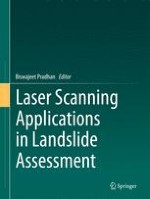2017 | OriginalPaper | Buchkapitel
13. Landslide Risk Assessment Using Multi-hazard Scenario Produced by Logistic Regression and LiDAR-Based DEM
verfasst von : Biswajeet Pradhan, Waleed M. Abdulwahid
Erschienen in: Laser Scanning Applications in Landslide Assessment
Aktivieren Sie unsere intelligente Suche, um passende Fachinhalte oder Patente zu finden.
Wählen Sie Textabschnitte aus um mit Künstlicher Intelligenz passenden Patente zu finden. powered by
Markieren Sie Textabschnitte, um KI-gestützt weitere passende Inhalte zu finden. powered by
